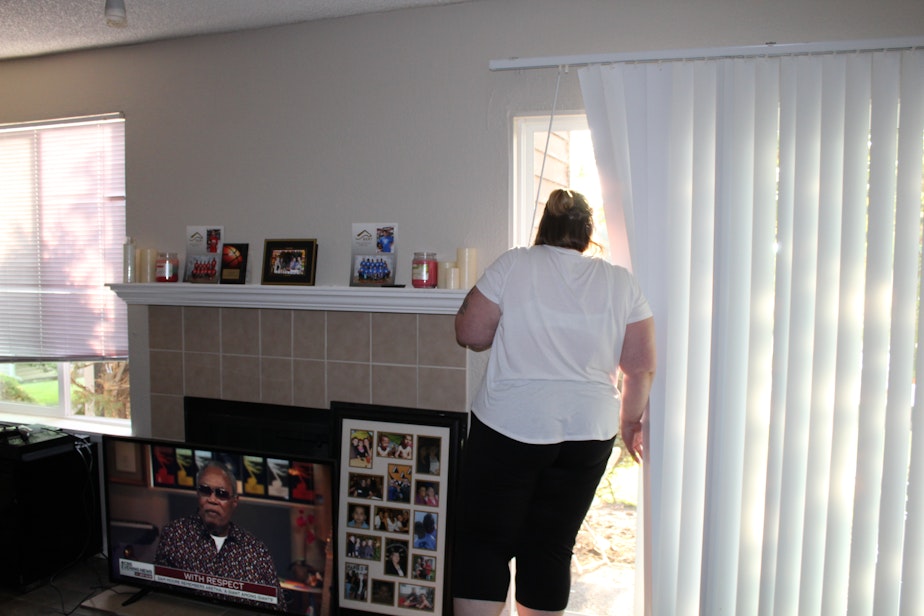Why do Seattle and King County spend so little on homelessness prevention?

Seattle is one of the richest cities in the United States, but government spending on homelessness is limited.
With that scarcity in mind, some think more should go to addressing the immediate crisis – thousands of people living on the streets. Others want to see more funding put towards long term solutions like affordable housing.
But what’s being done to prevent even more people from becoming homeless? That’s the question community member Rick Davis asked during the #SeaHomeless collaboration, a project among eight media outlets to answer hundreds of questions from readers. KUOW’s audience voted for Davis’ question to be answered.
So let’s get into it.
What are the main causes of homelessness?
There are as many reasons for homelessness as there are people who are homeless. The best source of data we have to answer this question comes from the survey King County does once a year as part of the annual one night count, an estimated tally of how many people are homeless on a single night in January.
The 2018 report shows people reported the top five causes of homelessness as: loss of a job (25 percent), alcohol or drug use (21 percent), eviction (11 percent), medical issues (9 percent), and mental health issues (9 percent).
What does “prevention” actually mean?
Housing people once they’ve already become homeless can be difficult and expensive. Homelessness can also cause trauma, especially for young people. Helping someone at imminent risk of losing their housing (like someone who has received an eviction notice) stay housed can be less costly—emotionally and financially—than trying to find housing after that person has already been struggling on the streets.
KUOW's Kate Walters discusses homelessness prevention
What does prevention funding look like?
Both Seattle and King County fund prevention programs. Some of the more traditional ones provide mainly financial aid for things like overdue rent, or other expenses, like a broken car needed to hold a job.
For the past 18 months, King County has been trying something different. The Youth and Family Homelessness Prevention Initiative, funded by money from the Best Starts for Kids levy, provides intense case management for clients to address the issues that are making their housing situation unstable.
Case managers are trained to be able to navigate the system and provide wraparound services: financial aid as well as behavioral health services, treatment services and resources for developmental disabilities. These case managers can also do things like help connect people to food banks, help them budget and negotiate with landlords.
How much is currently spent on prevention?
Only a fraction of the money earmarked for addressing the homelessness crisis goes towards prevention programs.
Seattle:
The city’s human services department is spending $6 million on homelessness prevention programs in 2018. The same department is spending roughly $78 million in 2018 on programs to help people after they’ve become homeless – things like shelters, outreach and transitional housing.
King County:
The county spent $6.7 million on homelessness prevention programs in 2017. About half went to the youth and family prevention program. They spent roughly $54 million on homelessness intervention programs in 2017.
It's estimated that more than 30,000 people were homeless at some point in 2017 in King County.
How well do prevention programs work?
People have been wary about putting money into prevention programs in the past because it’s tough to make sure the people getting resources would have truly ended up in emergency shelters or on the street without assistance.
There’s evidence that a lot of people in crisis would resolve their situation without drawing on public funds, according to researcher David Phillips.
Phillips is with the department of economics at the University of Notre Dame. He’s studied prevention programs in Chicago and he’s currently studying King County’s youth and family prevention program.
But despite the fact that it’s difficult to know whether resources are going to the right people, Phillips said prevention programs seem to be more cost effective than letting people become homeless and use emergency resources like shelters.
He said people who get public assistance enter emergency shelters at lower rates. They’ve also seen a decrease in arrests for violent crime in groups that received prevention assistance in Chicago.
Phillips is currently studying the King County model to see if intensive case management works better than simple financial assistance.
So far, officials say an average of $1,800 is spent per household in the youth and family program. And the County claims a 94 percent success rate. They say emergency shelter costs $10,000 to $15,000 annually per person, per bed.
Who gets prevention funding?
The county’s youth and family prevention program is only open to about a third of the county's total homeless population. Adrienne Quinn with King County said the program could be expanded if the study results show the program is effective. Other prevention programs are open to single adults and veterans as well as families and youth. Seattle's programs offer differing levels of case management depending on need.
In addition, King County is getting ready to award funding to affordable housing providers who have prevention models in place. The county grant would mandate that recipients have a partnership with either an inpatient mental health provider, inpatient substance abuse provider or a hospital.
Quinn said this is to help ensure people coming out of treatment facilities who would otherwise become homeless have a path to housing. This is the first time such a relationship is being required for grant funding.

